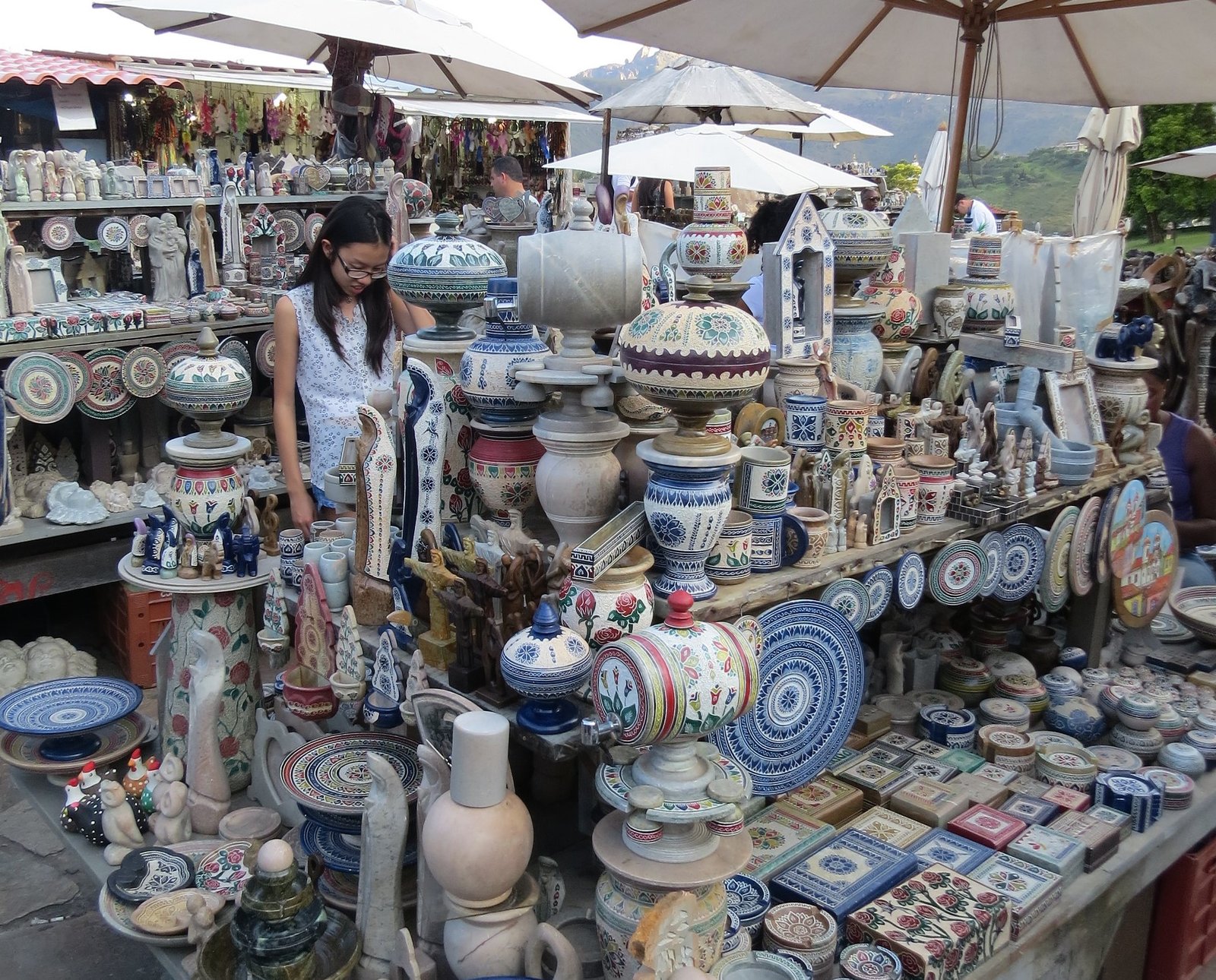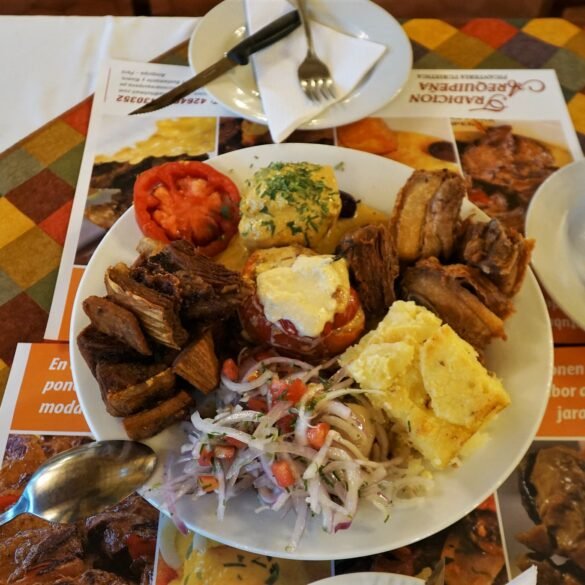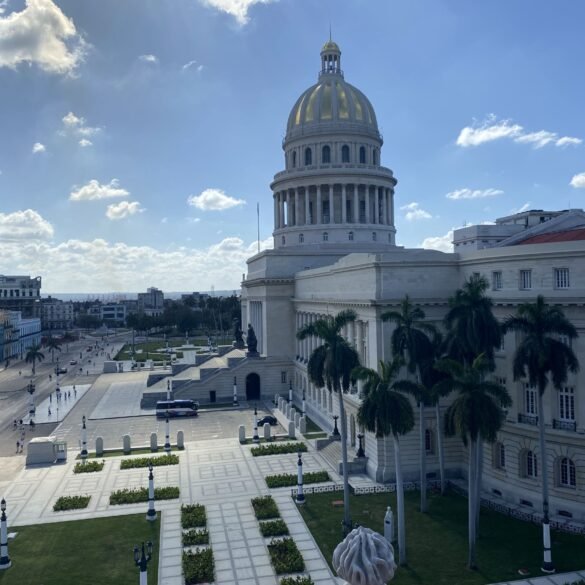Our condo is a museum of our never-ending globetrotting. African masks, religious statues, souvenirs, and mementos from all over the world constantly fight for shelf space with the cats. The more we travel, the more things we bring home. Our minimalist way of life directly conflicts with the constant desire to bring back even a tiny part of every foreign culture. We are at the point where we can no longer display everything we have accumulated over the years (and continue to accumulate), and now must rotate the collected pieces. I can’t describe in one post everything we brought back from trips (maybe we should do a couple of posts on this topic?). Today, I will highlight just a few special items we found across the globe.
Naga Statue, Cambodia
We are not religious, but we have one shelf dedicated to religious statues and art. In many countries, especially in the East, religion is a key aspect of people’s lives and is often reflected in art and everyday objects. In our collection, we have a beautiful blackwood Buddha statue from Thailand, a copper Ganesha statue from India, and wooden plaques for writing wishes to Shinto gods from Japan. One of the most interesting religious items we own is from Cambodia—a wooden naga statue of a Buddha seated atop a coiled nest of snakes. Before visiting Cambodia, we came across similar stone statues at the Art Institute of Chicago and other art museums in the U.S. But it was only when we got to Cambodia that we realized how much Cambodians love their snake gods. The National Museum of Cambodia in Phnom Penh was filled with old, weathered naga statues. No matter where we went in Cambodia, seven-headed nagas were ubiquitous, often guarding temple entrances. The obsession with snakes stems from the religious beliefs that Khmers (present-day Cambodians) are descendants of nagas, who were half-human and half-snake.
We bought our naga statue at the souvenir market, where Julia, for the first time in her traveling career, suffered a resounding defeat at the hands of local sellers, who refused to negotiate the asking price. Trying to get a discount, but getting nowhere with the vendor, Julia dramatically walked away, dragging me along.
“Let’s pay the full price.” I pleaded.
“This is Asia,” she hissed. “I know how it works. They will chase us and negotiate. Keep moving.”
As we were leaving, from the corner of my eye, I saw that the woman at the souvenir stall just shrugged her shoulders and ignored our theatrical departure. In the end, the descendants of snake gods won because we returned 15 minutes later and paid full price.


Soapstone Vase, Ouro Preto, Brazil
Perhaps the most stunning piece in our collection is a decorative soapstone vase from Ouro Preto. This former mining town in the beautiful region of Minas Gerais boasts magnificent Portuguese Baroque architecture and is a UNESCO site. Back in the day, when the mines operated at full capacity, excavating gold, diamonds, and iron ore, the town was among the wealthiest in Brazil. The mines have long been closed, and Ouro Preto is now geared mostly toward tourism. The nearby quarries, however, still produce soapstone, a very soft stone ideal for stone carving. As a result, the town has a unique, open-air Soapstone market. We browsed rows of tables filled with exquisite objects, talked to artisans, and finally settled on a gorgeous vase adorned with a flower pattern and hummingbirds.
Bringing the vase home was also something to remember. Trying not to damage the vase, we took it on the plane as a personal item. As we approached the gate, an airline representative pulled us aside for a few security questions. When he asked if we had anything on us that could be used as a weapon, for some unknown reason, Julia decided that it was a good time to engage in a metaphysical discussion.
“If you think about it, anything can be used as a weapon,” she mused. “Look, I think I can probably kill someone with this vase.” She noted, casually pointing to the vase I was holding.
The agent was shocked.
I was too.
“But … you are NOT planning to kill anyone with this vase, are you?” whispered the agent in a cautious voice.
“Oh no!” cheerfully answered Julia.
Somehow, they allowed us to board that plane and take the vase with us.



Pucara statue, Peru
One of our favorite souvenirs of all time is a small, wooden Pucara statue. Traveling through Peru, nearly every tourist shop had statues of two cute bulls tied together with a ladder and a cross in between them. These pairs of bulls were of different sizes and painted in different colors. When we initially saw them, we didn't think much of them. However, very soon, we realized how important these statues are for the people of Peru.
The night before going to Machu Picchu, we stayed in the town with the tongue-twisting name, Ollantaytambo, known for its lesser-visited Inca ruins. The Airbnb we rented in the town center was beautifully decorated and had an imposing statue of bulls on the nightstand. After settling into the room and taking an enormous number of pictures of the statue, it was time to check out the view. I opened the window and the first thing I saw was … a pair of wooden bulls mounted on the roof of the house right across from our house. I looked at another house, and it had a similar statue mounted on the rooftop. In fact, most houses had these bulls on their roofs. The bulls were apparently more than just a cute souvenir from a gift shop. We did a quick Google search and learned that these statues, known as Pucara, are the symbols of Andean Spiritualism. According to the local traditions and beliefs, people place them on the roofs of their houses to bring protection, health, and happiness to the dwellers of the house.
The next day, after spending an afternoon exploring the wonders of Machu Picchu, we bought a pair of Pucara bulls that now reside inside our apartment. We thought about asking our building administration to mount them on the roof of the building, per the Andean traditions, but figured that it was a long shot to get their approval. According to Peruvian traditions, it's also perfectly fine to keep Pucara bulls inside the house.



With the holidays quickly approaching, we thought it would be appropriate that the last post of the year would be something about gifts, even if they’re gifts we buy for ourselves!
Merry Christmas, Happy Holidays, and Happy New Year to everyone!

